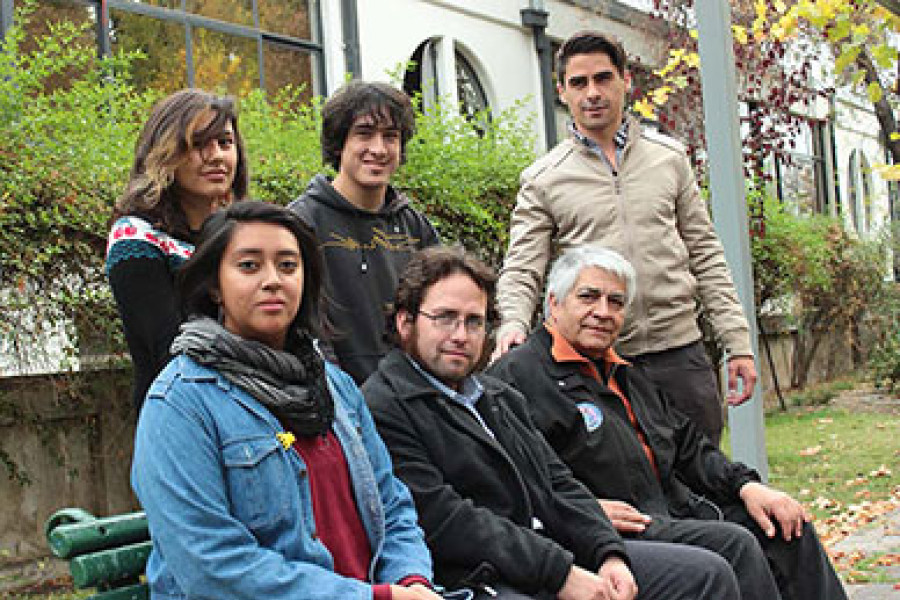The Optics and Photonics Group of Universidad de Santiago, led by graduate student Pablo Fredes, organized an educational astrophotography camp aiming to promote knowledge on how to handle different state-of-the-art technologies to observe the stellar panorama, capturing unprecedented photographs.
About 15 students of the Engineering Physics program participated at the First Southern Night Skies Astrophotography Camp organized by the Optics and Photonics Group of our University, which is one of the Student Chapters of the Optical Society of America (OSA).During two nights, the young group made up of undergraduate and graduate students of the Engineering Physics program participated in the activity that was sponsored by Centro Cultural de Astronomía La Cisterna. They were taken to Observatorio Turístico y Educativo Roan Jasé, at Cajón del Maipo to become familiar with observational field work using different telescopes and high-resolution CCD cameras that operate together with a computer to capture images of the night sky.About 15 students, together with five members of Centro Cultural de Astronomía La Cisterna, had the possibility of observing the surface of the sun and its spots during the day and enjoyed interesting talks about the life cycle of stars, constellations, exoplanets, the Mapuche world view and astrobiology, among others.“We learned so much: setting the telescopes in ‘station’, understanding the use of mirrors and lenses, distinguishing different types of telescopes and finding celestial bodies in the sky. Watching planets directly is amazing,” the student Daniel Barrientos said. He considered the experience to be rewarding, even from a spiritual point of view.For these young students, this approach to astronomy also represents a view to the wide variety of employment opportunities related to their program and it allows them to start exploring the possibility of working in any of the important astronomical observatories in our country.Astronomy at Universidad de SantiagoPablo Fredes, president of the Optics and Photonics Group of our University, one of the OSA’s Student Chapters, is also a professor at the Department of Physics and is writing his dissertation to complete his Philosophy of Science graduate program. From his experience as a teacher, he thinks that astronomy is a field that could be strengthened by our University, especially because of the relations fostered by the Planetarium and the enthusiasm shown by the students of his Department.“All physics students are interested in astronomy,” he said, considering the advantages offered by the skies of our country for this activity and for research. “Maybe this camp can contribute to develop this field at the University,” Fredes added.He explained that the camp idea was born last year, when the members of the group were thinking thought about the activity that they wanted hold in 2014 with funds provided by the OSA.The OSA, through its student chapters, funds activities aiming to spread, promote and encourage studying some physics branches, like optics and photonics (the study of photons’ properties and flux).“The OSA’s grant allowed us to buy a CCD camera- that we attached to a telescope- and to cover transportation, food and entry-fee expenses,” Fredes said.The activity was organized together with Centro Cultural de Astronomía La Cisterna, which members are astronomy amateurs willing to share their knowledge and equipment.“We are very happy with the results, because the activity included young people who knew much about optics but who had not had the chance of watching through a telescope or taking photographs with this type of instruments. Besides, the images we were able to capture are a valuable material, so we are doubly satisfied,” Manuel Tobar, a member of Centro Cultural de Astronomía La Cisterna, said.In October, the members of the group are planning to hold the Second National Congress of Optics and Photonics, where they expect to exhibit the photographs taken during the camp that took place on April 4-6.“We would like to have more activities, establish more links and have the possibility of applying for other grants, maybe at a university or at a national level,” Fredes concluded.Translated by Marcela Contreras


